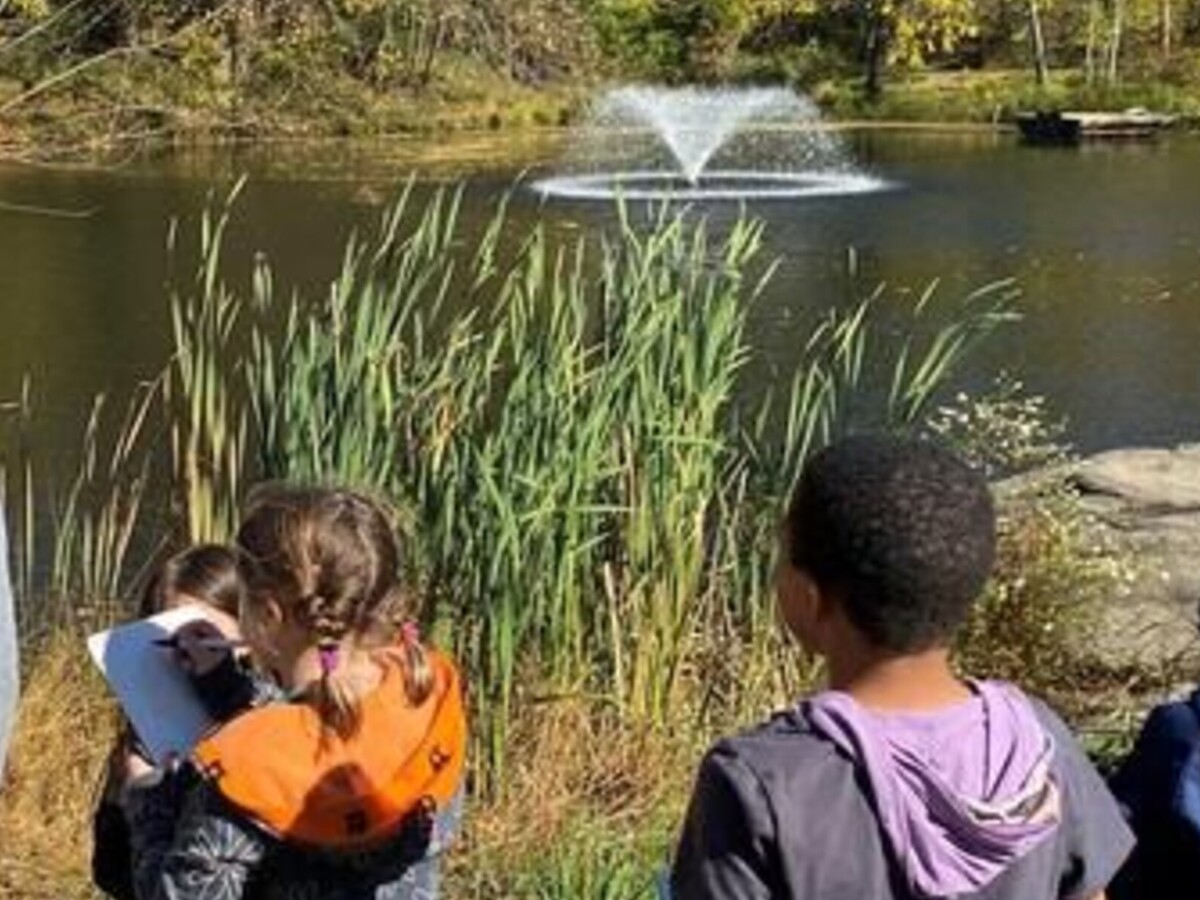Image

POT SPRING ELEMENTARY SCHOOL GRADE 3 STUDENTS LEARN ABOUT THEIR POWER TO PROTECT THE ENVIRONMENT
By TEAM BCPS
In the fall, all three Pot Spring Elementary School Grade 3 classes studied ecology and the environment. Students were engaged in hands-on activities including building models of sewer and storm drains, learning about water quality and testing.
The lessons, based on BCPS curriculum and the Next Generation Science Standards, were designed by Towson University Professor Pamela Coan Epler, who was instructing university interns in how to teach elementary science. The interns then implemented the lessons with Epler's guidance and the support of Pot Spring Grade 3 teachers Kathleen Carter, Michelle Doyle, and Joann Van Auken and Principal Jane Martin.
Students were engaged in hands-on activities including building models of sewer and storm drains, learning about water quality and testing.
"Our Grade 3 teachers are a hardworking crew that wants to make a difference in our community," says Martin. "They made amazing real-world connections through their partnership with Towson University. We are so fortunate to have such supportive community partners."
.jpg?auto=webp)
.jpg?auto=webp)
.jpg?auto=webp)
.jpg?auto=webp)
Students labelling storm drains on Fallsbrook Road
This winter, the students took a walking field trip to nearby Springlake Pond. Along the way, they stopped to label storm drains on Fallsbrook Road to remind neighbors that dumping pollutants in drains can affect the quality of local waterways.
Once students reached the pond, they watched a drone demonstration and learned how drones are used to identify, evaluate, and solve environmental problems. While there, they discovered that soil erosion was damaging the pond. The students discussed how pond pollutants can kill fish and the insect nymphs that inhibit algae growth. They also discussed how water in the pond filters down into Loch Raven Reservoir, an important source for local drinking water.
.jpg?auto=webp)
.jpg?auto=webp)
.jpg?auto=webp)
Students, teachers, and interns examining Springlake Pond
Once they were back in the classroom, the students wrote letters to the Springlake Community Association urging the association to act. Epler hand-delivered the letters to the association’s January meeting.
In response, Ron Boone, chair of the Springlake Community Pond Preservation Committee, worked with the Springlake Community Pool on a solution. The erosion was being caused by run off from the pool. A new holding tank will stop chlorine from the pool from getting into the lake. Boone expects that the dirt will no longer be washed away and that grass will grow again within a few months.
.jpg?auto=webp)
.jpg?auto=webp)
.jpg?auto=webp)
.jpg?auto=webp)
Some of the letters students wrote to the Springlake Community Association.
“This was an authentic lesson for the students that tied to all our curriculum,” says Doyle. “The power that you are never too young to take action and make a difference is a lesson I hope the students will remember from third grade.”
“This was an authentic lesson for the students that tied to all our curriculum. The power that you are never too young to take action and make a difference is a lesson I hope the students will remember from third grade.” - Michelle Doyle, Grade 3 teacher, Pot Spring Elementary School
“I think this is a great example of elementary school students making a difference in their community, as well as supporting the Baltimore County Public Schools curriculum in tying learning to advocacy and civics,” says Epler.
For Epler, the whole experience brought her full circle. She grew up in the Timonium area, and attended Pot Spring Elementary, Ridgely Junior High (now Ridgely Middle), and Dulaney High School, before pursuing a career in the sciences.
More images from the field trip and of student letters about the pond can be found on Flickr.